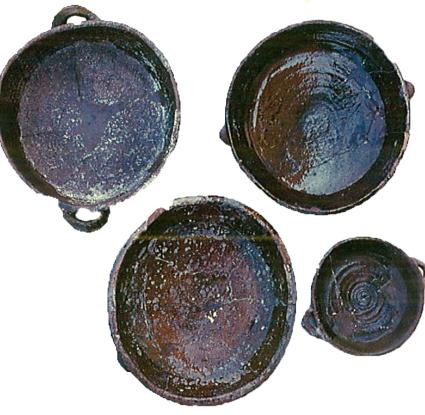A type of omelette.
Name - Origin
A type of omelette.
It was a fried omelette containing eggs, vegetables and onion (Koukoules 1953, p. 68).
Additional information and bibliography
According to Papanikola-Bakirtzi (1999, p. 17), foods such as ‘bladder campion, mallows, or wild asparagus with eggs’ are variations of ‘sfoungaton’ that exist in Cyprus until today. Scholars have previously argued that it was Westerners, in the early 13th century, who introduced fried food to the Eastern Mediterranean. However, recent studies and review of archaeological finds (pots, pans) show that the Byzantines, apart from vegetables and fish, also loved fried food and broth (Vionis et al. 2010, pp. 454-460).
F. Koukoules, 1952. Βυζαντινών Βίος και Πολιτισμός.. Vol E. Athens.
D. Papanikola-Bakirtzi, 1999. Επιτραπέζια και Μαγειρικά Σκεύη από τη Μεσαιωνική Κύπρο (Tableware and Cookware of Medieval Cyprus). Nicosia: Lithography Zavalli Ltd.
A. Vionis, J. Poblome, B. De Cupere, M. Waelkens, 2010. "A Middle-Late Byzantine Pottery Assemblage from Sagalassos: Typo-chronology and Sociocultural Interpretation". Hesperia 79, pp. 423-464.
Athanasios Vionis

